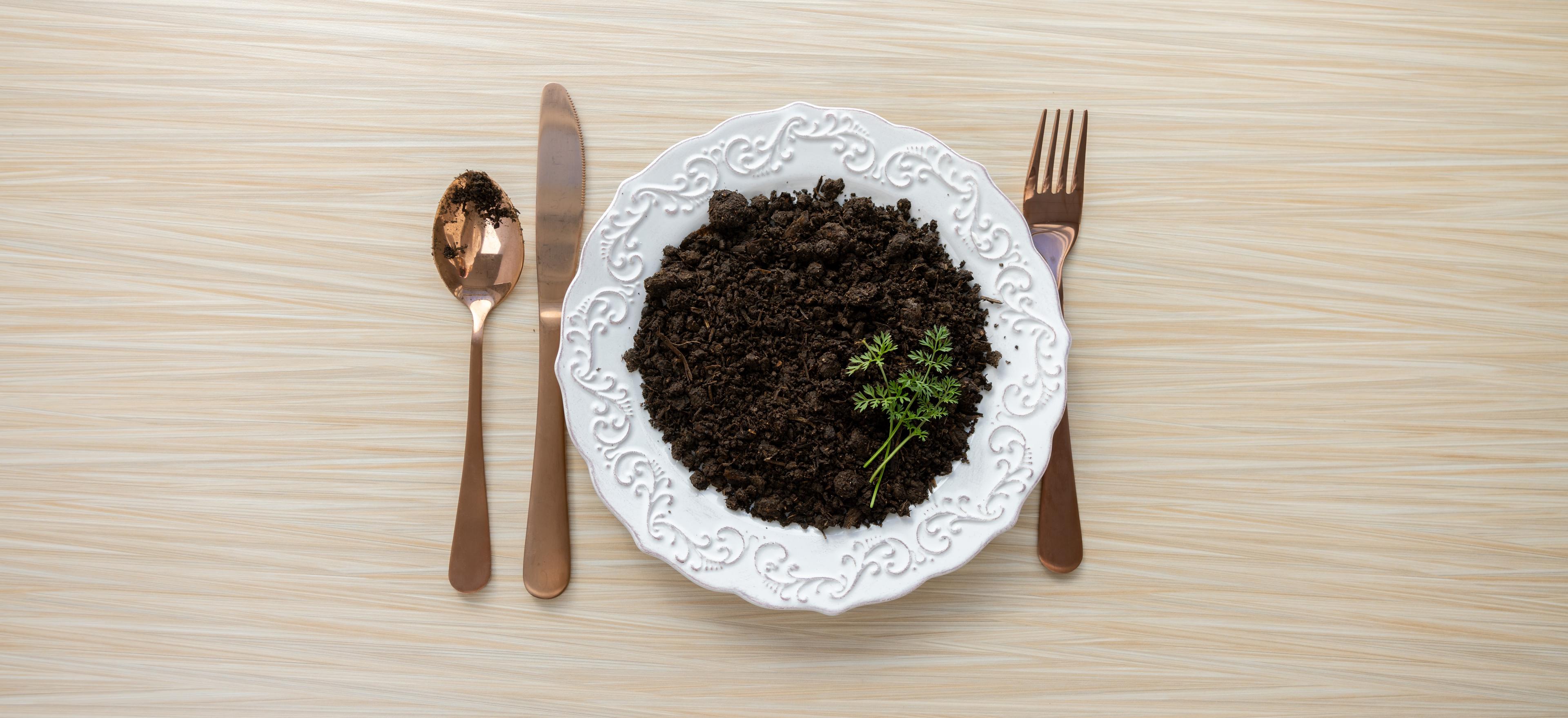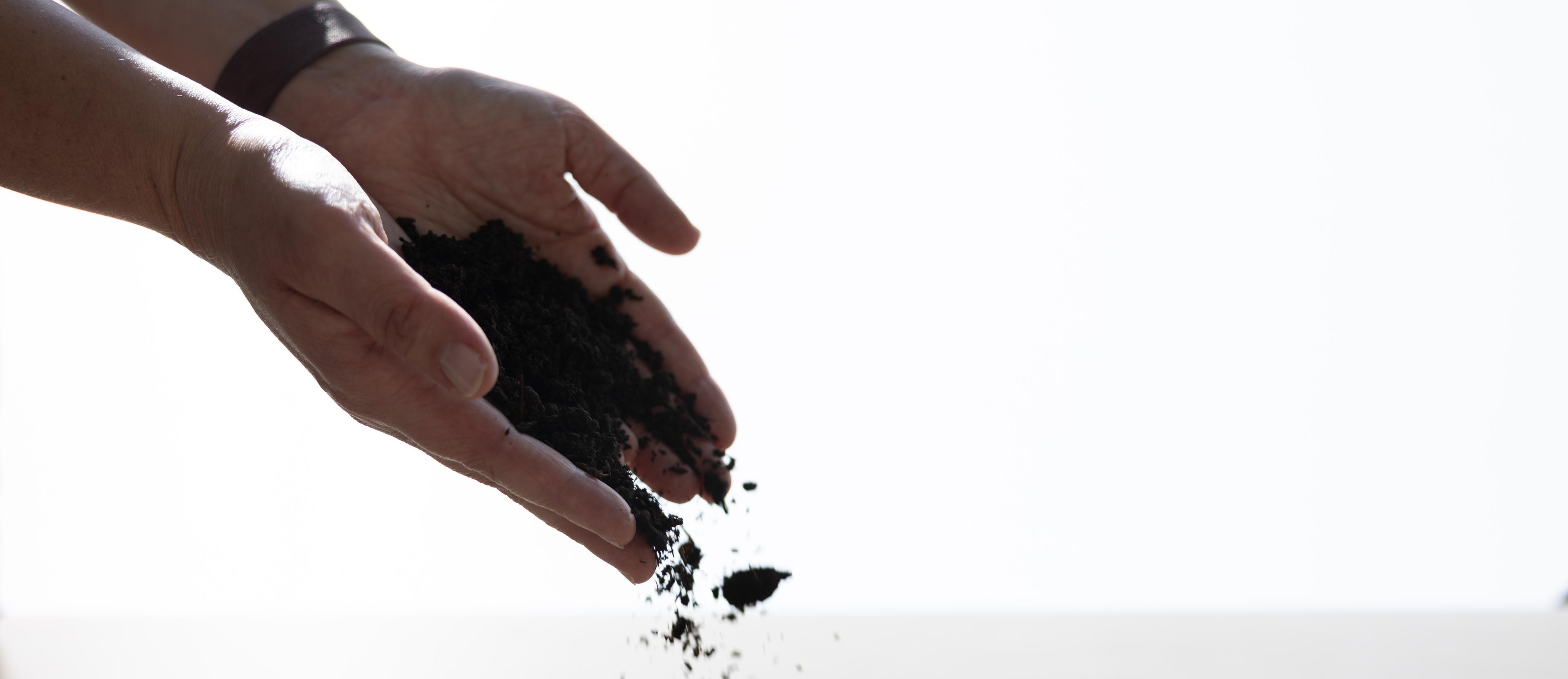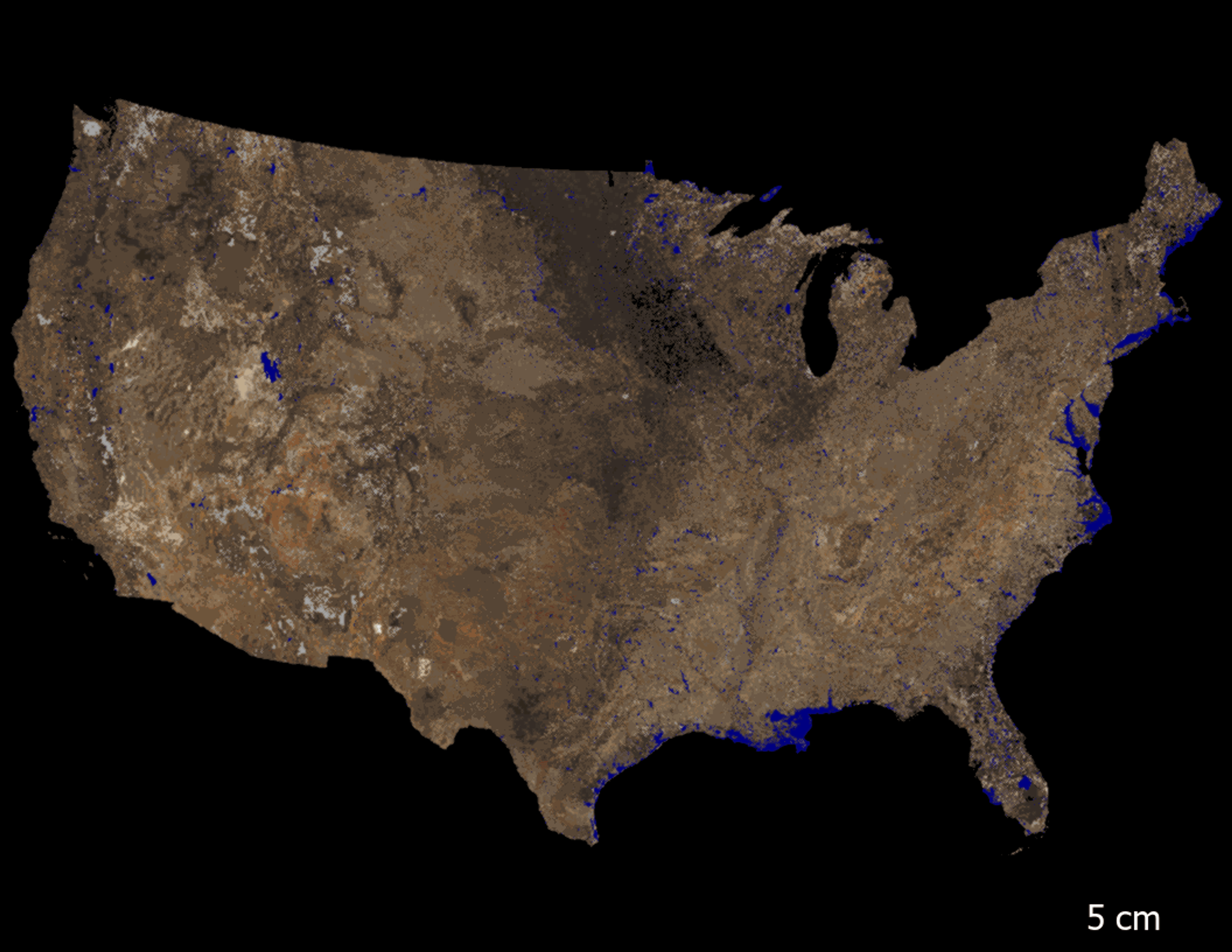
Earth
The 5 Senses of Soil
We recently shared a soil 101. Now that we know the basics of soil, let’s think about how soil impacts your senses — touch, smell, taste, sight and sound — and how it has its own senses. Not only does soil make life possible above ground, but soil is alive and reacts dramatically to how it is treated.
Soil breathes in oxygen and gives off carbon dioxide, much like humans. And soil has a lot more in common with people than you may think.
Amazing things happen on top of and under the ground.
Smell: What Does Soil Smell Like?
It’s not easy to characterize the smell of soil. How would you describe it? Natural, clean, fresh? Different soils smell distinct from each other.
“There’s a rich, earthy smell,” Organic Valley Grassmilk® farmer Kevin Mahalko said. “Like a clean smell ― it’s like a good, living functioning smell.”
There is even research that suggests smelling soil can reduce stress and improve your mood!
Soil may not get the credit, but it is also connected to the smell of fresh rain. It is not the rain you are smelling. When you step outside and breathe deeply after a rain shower and take in the earthy scent, it is known as petrichor. This pleasant aroma comes from bacteria in the soil that produce the compound geosmin.
Types of soil (known colloquially as “dirt”) have different smells, but generally, healthy soil should have a nice earthy odor. Unhealthy soil often has a sour or metallic smell, according to Purdue University. Sometimes, unhealthy and depleted soil doesn’t carry much scent at all.
Soil Terms of Note:
- Petrichor: A pleasant smell that comes after a rainfall.
- Geosmin: The organic compound that creates the earthy smell of rain. Beet peels are rich in geosmin, giving them an earthy taste and smell, too.
- Terroir: Soil, climate and sunlight that gives wine grapes and more a distinctive character.
- Soil respiration: The measure of carbon dioxide released from soil.

Taste: Understanding Terroir
Terroir is the combination of environmental factors, particularly soil and climate, that impart tastes into food and, most notably, wine.
Winemakers are well-versed in the concept of terroir and its influence. Some foodies also use the trendy term liberally, and several food companies are starting to use “terroir” to their marketing advantage.
However, a viticulture professor caused a stir in the wine world when he wrote a book questioning the concept of terroir. The definition of the terroir concept is one of the most debated issues in the wine industry, according to another study. However, that study showed a “terroir-specific effect” that “allows each vineyard to be characterized by the unique profile.”
Cooper Mountain Vineyards owner Barbara Gross says terroir “remains of critical importance to us as it defines our style and the taste of our wines.”
Her family grows organic grapes in Willamette Valley, Oregon — known as Oregon Wine Country due to 700 wineries in the region.
“I don't think that anyone can argue the importance of climate in grape growing, which is a tenant of terroir,” she said. “Taming Mother Nature's impact on grape cultivation and, consequently, the character of wines, presents a formidable challenge. Speaking for our winery, we haven't quite unlocked that mystery, nor do we have plans to embark on that ambitious quest.”

Soil and Food Nutrition
We’ll leave the terroir to the experts. We do know soil impacts a food’s nutritional value. Soil provides essential nutrients and minerals to plants, which can affect how nutrient-dense a plant will be.
What about actually tasting soil? We all inadvertently ingest some soil — ask any gardener who pulls a fresh carrot out of the ground and simply wipes it off before eating. We ingest foodborne dirt, airborne dirt and sometimes even a bit of dirt on our hands makes it to our mouths.
“I’m not afraid to pick a carrot, salad onion or radish and brush it off and just eat it,” Mahalko said. “When it’s grown in an organic way, a nontoxic way, I am not afraid to get soil in my mouth.”
Healthy soil provides nutrients to the plants that help them taste the way they should, he said.
The Environmental Protection Agency estimates that children in the United States consume, on average, 200 to 800 milligrams of dirt per day. (Mud pie anyone?)
We all unintentionally “eat” dirt, but some people intentionally eat dirt, according to the Centers for Disease Control and Prevention.
Accounts of eating dirt (called geophagy) date back thousands of years. People ate dirt for religious reasons, as condiments and as food during famines. The most common occasion for eating dirt in many societies is pregnancy.
One Cornell University study suggests eating small amounts of dirt may be beneficial (we are in no way suggesting you eat dirt as there are risks associated with ingesting contaminated soils).

Touch: What Does Soil Feel Like?
Some agronomists compare healthy soil to a good chocolate cake — soft and crumbly.
The feel of soil says a lot about its health. Soil should be rich in organic matter, allowing it to be loose and crumble easily in your hands. Unhealthy soil is often compact.
Different types of soil have different textures. Soil that contains a lot of sand feels gritty. Clay-based soil can be hard if dry and sticky when wet. Silty soil feels like flour.
If you walk barefoot across healthy soil, it’s almost like a cushion, Mahalko said. If you grab a handful of healthy soil it should not be compact and will flow easily through your hands.
Healthy soil has rootspace, networks, airspace and places for water to flow, he said.
Sight: A Colorful Earth
From far above, soil looks like a kaleidoscope of burnt umbers and light browns. But darkly colored soil (top soil) is full of microorganisms and is good for growing plants. Light brown soil is missing its top layer and is not as nutrient-dense.
Soil color is related to soil condition and the level of organic matter, drainage capacity, degree of oxidation and extent of weathering. Darker soils generally contain more organic matter than other soils.
Topography has a lot to do with it.

This map shows soil color at various depths. Learn more about types of soils as related to their location at Natural Resources Conservation Service.
Mahalko said prairie soil is among the healthiest soil you can find. “It’s just black because it had thousands of years of growing, giving it more organic matter,” he said, comparing prairie land to soil in his region of Northcentral Wisconsin.
The topsoil in his area is “younger and more shallow” than in other areas, Mahalko said. During the last glacial period, his region was under a mile of ice. Topsoil should be good, dark, rich soil, but when the glacier melted it left hills, kettles, moraines, gravel and ground rock deposits.
These conditions are not ideal for plant growth, and as a land steward, Mahalko works to improve that soil every day. Since his parents bought a farm and started soil testing in the ’60s, the soil is measurably better.
“If your soil has good structure, smells right, looks right and has the correct organic matter, you can continue building your soil while being productive by using good organic methods,” he said. “You do not need toxic chemicals to get the best results. Farming with organic methods may not be the easiest way, but the effort creates better soil — the soil that creates life.”
Some farming practices — like monoculture — have degraded the earth.
“The story of human agriculture is people farmed the soil to the point it was a desert and had to move on,” Mahalko said. “We can’t move on any more. We need to start taking care of it.”

Sound: Soil Creates a Symphony
Soil is an underground wonderland of biodiversity — there are bugs, worms, roots and rodents. All of them are moving, breathing and disrupting the soil. Water is seeping in the soil and mammals and reptiles are slithering and galloping above. You may be dancing barefoot in the lawn. All that commotion produces vibrations and scientists have found a way to listen to soil.
Researchers are studying underground soundscapes using ecoacoustics, listening to the sounds of nature. The use of sound to study the environment is becoming more popular as sound-recording technologies are increasingly available. There is more aboveground eco-acoustic monitoring, but soil eco-acoustics have yet to be used in restoration projects.
Researchers have found healthier soil to be more tuneful.
Organic Valley farmers want to keep the tune flowing. Proper land stewardship is essential for healthier soil, which impacts the amount of carbon in the air, water quality, nutritional value of food and so much more. Soil health impacts your health.
We must take care of the soil so it can take care of us.
Resources: You can learn more about soil health and makeup in your area by visiting the U.S. Department of Agriculture Natural Resources Conservation Service website.
An antique typewriter fanatic and chicken mom who treasures time outdoors admiring all that nature has to offer, Jennifer McBride is Rootstock’s editor. McBride spent 15-plus years as a journalist and newspaper editor before finding her niche with the nation’s leading organic dairy cooperative. Contact her at Rootstock@organicvalley.com.
Related Articles
- Tags:
- land stewardship & conservation,
- soil health & science


















